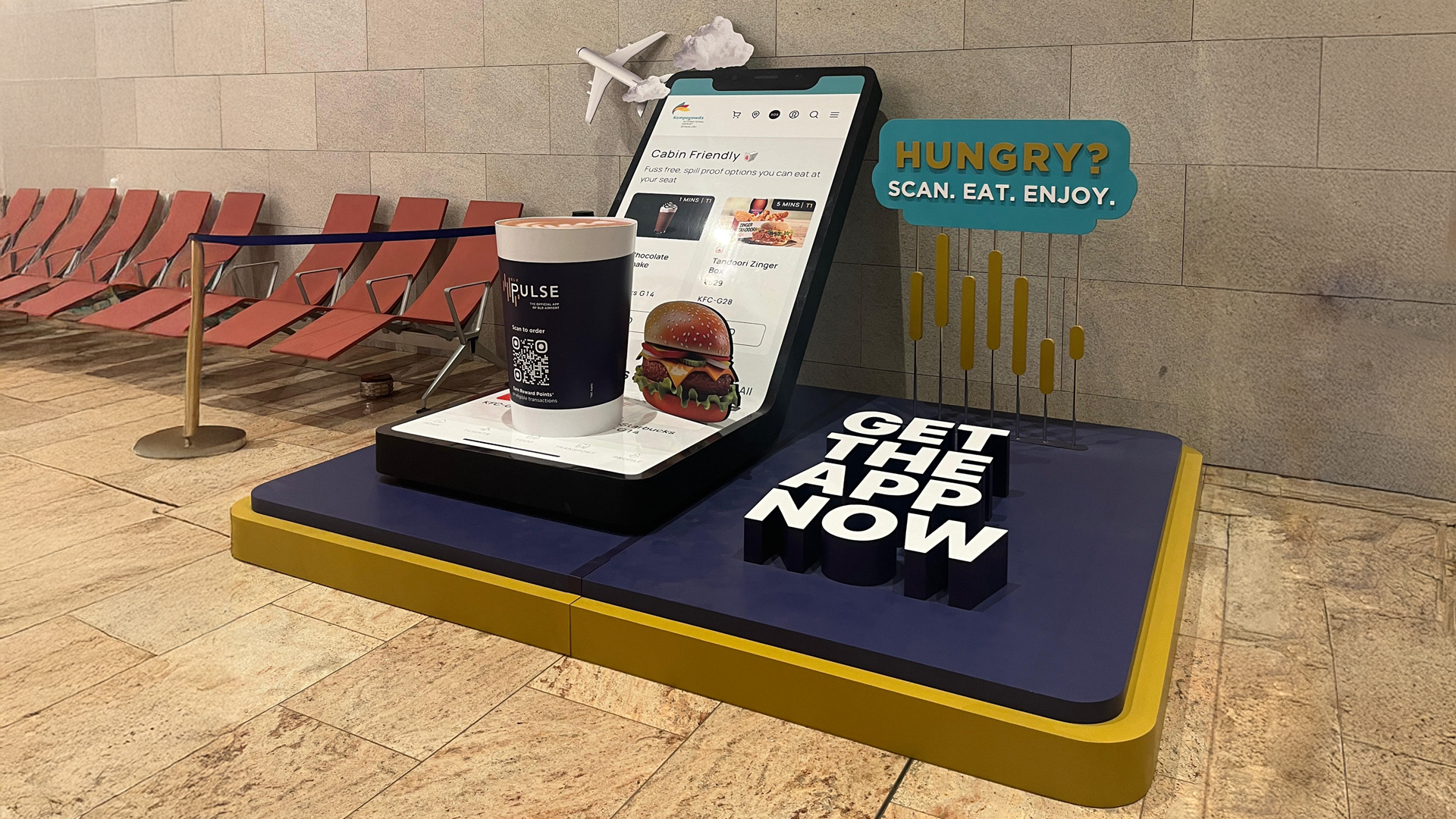

In today’s saturated marketing landscape, standing out requires more than just catchy taglines or vibrant visuals. Brands are finding innovative ways to create immersive experiences by appealing to multiple senses, leaving a lasting impression on their audience. Sensory marketing goes beyond traditional advertising—it engages customers on a deeper emotional level, making brands more memorable and impactful.
Visual elements are often the first point of engagement. For Bangalore Pulse, the official Bangalore airport app, we designed an interactive coffee-themed setup with a bold, eye-catching QR code that directed users to download the app. The striking design surrounding the setup not only attracted attention but also created an association with a modern, dynamic brand. Thoughtfully designed visuals establish instant connections and ensure the brand remains etched in memory.
Scent is one of the most powerful triggers of memory and emotion. In the Bangalore Pulse experience, we integrated a coffee diffuser that filled the area with the inviting aroma of freshly brewed coffee. This sensory cue complemented the coffee-themed setup and evoked a sense of comfort and familiarity, reinforcing the app’s branding while creating a positive emotional experience.
Tactile experiences further immerse the audience in the brand story. Incorporating elements that can be held, touched, or felt – like textured surfaces or interactive installations – can leave a lasting impression. These physical interactions help transform a passive audience into active participants, creating a stronger emotional and sensory connection to the brand.
Subtle background audio can set the mood and align with the brand’s identity. For Bangalore Pulse, we curated ambient sounds of coffee being brewed and gentle café chatter. These auditory cues created a cohesive sensory experience, further immersing visitors in the environment and strengthening the emotional bond with the brand.
The location of a sensory installation plays a crucial role in its effectiveness. Placing it near relevant contexts – like a coffee shop for a coffee-themed experience – creates a seamless connection between the environment and the brand. Proximity ensures higher engagement by targeting audiences when they are already in a receptive state, increasing the likelihood of recall and interaction.
By appealing to multiple senses, brands can cut through the clutter of traditional advertising and create experiences that resonate long after the initial interaction. Sensory marketing doesn’t just capture attention – it builds a deeper connection, turning fleeting moments into unforgettable brand encounters.
In an era of endless noise, leveraging the power of sensory experiences ensures your brand doesn’t just stand out but stays top of mind.